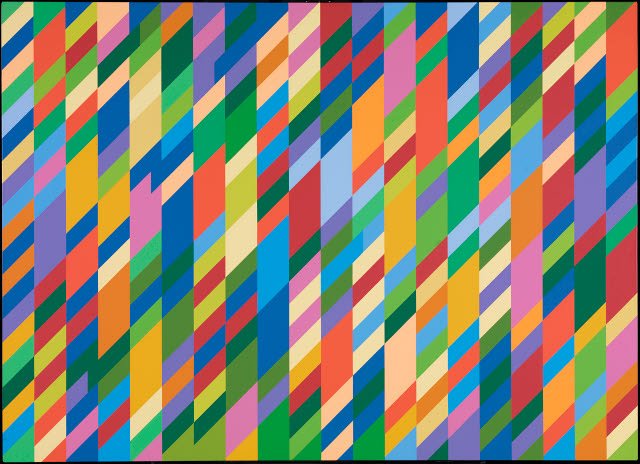
Oil paint on canvas
1651 × 2277 mm
Nataraja is a term from Hindu mythology, which means Lord of the Dance. It refers to the Hindu god Siva (Shiva) in his form as the cosmic dancer. Riley’s use of the term refers to the emphasis on rhythm and counter-rhythm, which are central elements in the painting.
Bridget Riley’s paintings look almost mechanical / digital graphics, with this geometric abstract nature, that she influences for many designers, including the well-known graphic designer Lance Wyman, and artists associated with the YBA movement, including Damien Hirst and Rachel Whiteread.
The progression of shapes intensifies, climaxes, and then de-escalates, provoking the viewer to confront their perceptual senses as well as their ideas of “stabilities and instabilities, certainties and uncertainties.”
Steeped in the paintings of the Impressionist, Post-Impressionists, and the Futurists, Riley dissects the visual experience of the earlier modern masters without their reliance on figures, landscapes, or objects. Playing with figure/ground relations and the interactions of color, Riley presents the viewer with a multitude of dynamic, visual sensations.
“For me nature is not landscape, but the dynamism of visual forces.”
BRIDGET RILEY
reflection
+ interesting immediate visual effect that physically influences reader, which maybe can cause dizziness and nausea, and psychological responses like a hallucination or hypnosis… which i can apply to my project as a manifesto of a psychological state…
https://www.theartstory.org/artist/riley-bridget/life-and-legacy/#nav
https://www.tate.org.uk/art/artists/bridget-riley-1845
